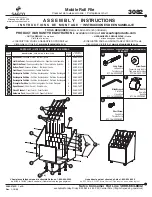
20
Configuring Inputs, Master Clock Source, & SRC
The VENU360 allows you to select either the internal crystal oscillator or one of the AES inputs for clock master. When using
the VENU360-B/VENU360-D models and connecting to a BLU link ring or Dante network, master clock must be derived
from the BLU link ring or Dante network, or from the internal BLU link/Dante card respectively.
Built-in sample rate conversion (SRC) can be used when connecting two different digital devices to the AES inputs (each
with its own clock), when connecting digital AES signals operating at sample rates other than 48 or 96 kHz, or when using a
combination of BLU link/Dante and AES input signals.
When running the Setup Wizard, the VENU360 will automatically configure the XLR inputs and master clock source for the
application. And when using the VENU360-B/VENU360-D models, the Wizards will help walk you through the BLU link/
Dante configuration – note that much of the Dante configuration will need to be performed in Audinate’s Dante Controller
software. In most cases, even in complex configurations, the Wizards will make input assignments and clocking setup very easy.
Some more-advanced configurations may require manual adjustments to these input configuration and clock settings, which
can be performed in the Utility menu. For information on the Utility menu parameters, see
The following section shows different clocking configurations and how the VENU360 should be configured for each.
All Analog Connections
When using all analog connections, select either the
“Internal 48 kHz” or “Internal 96 kHz” clock source setting.
In this configuration, XLR 1 and 2 must be configured for
analog operation (these are the default settings from the
factory).
VENU360 Utility Settings:
Clock Source:
Internal 48 kHz or 96 kHz
XLR 1 Input Format: Analog 1
SRC:
N/A
XLR 2 Input Format: Analog 2
SRC:
N/A
VENU360 Inputs
Analog Device
















































